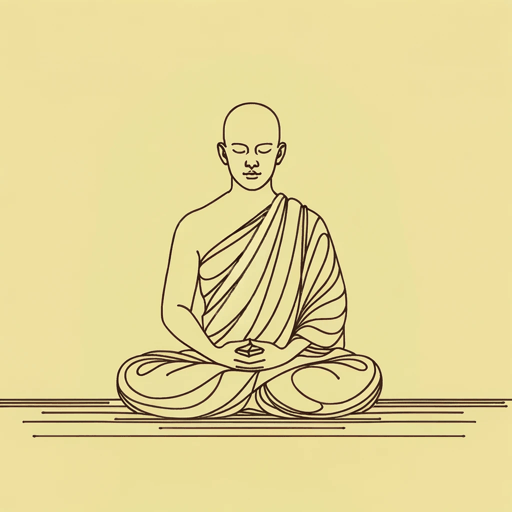38 pages • 1 hour read
Jay ShettyThink Like a Monk: Train Your Mind for Peace and Purpose Every Day
Nonfiction | Book | Adult | Published in 2020A modern alternative to SparkNotes and CliffsNotes, SuperSummary offers high-quality Study Guides with detailed chapter summaries and analysis of major themes, characters, and more.
Part 2Chapter Summaries & Analyses
Part 2: “Grow”
Part 2, Chapter 5 Summary: “Purpose: The Nature of the Scorpion”
Here, Shetty introduces the idea of dharma, a Sanskrit term that he defines as “’your calling’” (94). When people conduct their lives by their “guiding values and deepest intentions” they are able to discover their dharma (95). He relates an anecdote about his time in the ashram, when every monk had to participate in all of the activities necessary to run the place. Some monks enjoyed certain activities over others—Shetty, for one, disliked caring for the cows—but the experience of engaging in a wide range of activities proved key to opening the mind and creating flexibility. It also, eventually, leads one to a personal calling. Ideally, one works to find the “magic formula for dharma,” which combines one’s passion with one’s expertise, in service of usefulness (97). This is how one arrives at purpose.
Engaging in a wide variety of activities is important to find where one’s passion overlaps with one’s expertise. It is possible to enjoy something without necessarily being adept at it, and vice versa. Shetty cautions against living “someone else’s dharma” (100). He relates another anecdote wherein he discovers his affinity for teaching; not only is it something at which he excels, but it is also something which he enjoys.
Related Titles
By Jay Shetty
Featured Collections
Forgiveness
View Collection
Health & Medicine
View Collection
Order & Chaos
View Collection
Philosophy, Logic, & Ethics
View Collection
Psychology
View Collection
Religion & Spirituality
View Collection
Self-Help Books
View Collection
Truth & Lies
View Collection
Valentine's Day Reads: The Theme of Love
View Collection


